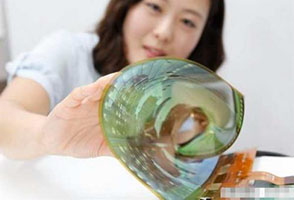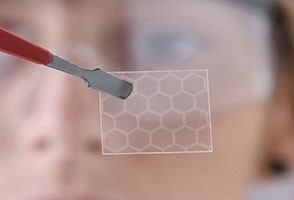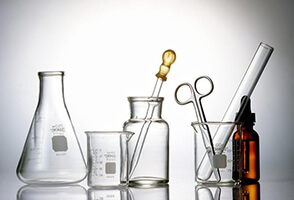The Role and Application of Nano Silver
2020-12-22
Nano Silver is the simple substance of metallic silver whose particle size is nanometer level. The particle size of nano-silver is mostly around 25 nanometers, and it has a strong inhibitory and killing effect on dozens of pathogenic microorganisms such as Escherichia coli, Neisseria gonorrhoeae and Chlamydia trachomatis, and it will not produce drug resistance. Various daily necessities made of nano-silver have good antibacterial effects.
The role and characteristics of nano silver
1. Broad-spectrum antibacterial
Nano Silver Particles directly enter the bacteria and combine with oxygen metabolism enzymes to suffocate the bacteria and kill most of the bacteria, fungi, molds, spores and other microorganisms that come into contact with them.
Research by domestic authoritative institutions found that it has comprehensive antibacterial activity against drug-resistant pathogens such as drug-resistant Escherichia coli, drug-resistant Staphylococcus aureus, drug-resistant Pseudomonas aeruginosa, Streptococcus pyogenes, drug-resistant enterococcus, anaerobic bacteria, etc.; Common bacteria on the surface of burns, scalds and wounds such as Staphylococcus aureus, Escherichia coli, Pseudomonas aeruginosa, Candida albicans and other G+ and G-sex pathogenic bacteria have bactericidal effects; it has a bactericidal effect on Chlamydia trachomatis and causes sexually transmitted diseases. Cocci also have a powerful bactericidal effect.
An antibiotic can kill about 6 kinds of pathogens, while nano silver can kill hundreds of pathogenic microorganisms. Kills bacteria, fungi, trichomoniasis, mycoplasma/chlamydia, and Neisseria gonorrhoeae. It has a strong bactericidal effect and has the same effect on antimicrobial resistant bacteria!
2. Strong sterilization
According to research, Ag can kill more than 650 kinds of bacteria in a few minutes. After the nano silver particles are combined with the cell wall/membrane of the pathogenic bacteria, they can directly enter the bacteria body and quickly combine with the sulfhydryl group (-SH) of the oxygen metabolism enzyme to inactivate the enzyme and block the respiratory metabolism to suffocate and die. The unique bactericidal mechanism enables nano silver particles to quickly kill pathogenic bacteria at low concentrations.
3. Strong permeability
Nano silver particles have super permeability, can quickly penetrate 2mm under the skin to sterilize, and have a good sterilizing effect on common bacteria, stubborn bacteria, drug-resistant bacteria and deep tissue infections caused by fungi.
4. Repair and regeneration
Nano-silver can promote wound healing, promote the repair and regeneration of damaged cells, decompose and grow muscle, antibacterial and anti-inflammatory, improve the microcirculation of tissues around the wound, effectively activate and promote the growth of tissue cells, accelerate wound healing, and reduce scar formation.
5. Antibacterial and durable
Nano silver particles are produced using patented technology, with a protective film outside, which can be gradually released in the human body, so it has an antibacterial effect.
6. No drug resistance
Nano-silver is a non-antibiotic bactericide: Nano-silver can kill various pathogenic microorganisms and is stronger than antibiotics. The unique antibacterial mechanism of 10nm nano-silver particles can quickly and directly kill bacteria and lose their reproductive ability, so they cannot be produced. The next generation of drug resistance can effectively avoid repeated attacks caused by drug resistance.
Application of Nano Silver
Nanomaterials exhibit unique thermal, electrical, optical, acoustic, magnetic, mechanical properties and catalytic properties due to their high surface energy and chemical activity. They are widely used in superconducting, chemical, medical, optical, electronic, electrical and other industries ,with broadly application foreground.
1. Superconducting applications
According to reports, using a light sintered body made of 70nm silver powder as a heat exchange material can make the working temperature of the refrigerator reach 0.01-0.003K, and the efficiency is 30% higher than that of traditional materials. Through the study of (Bi,Pb)2Sr2Ca2Cu3Ox bulk materials doped with nano-silver with different contents, it is found that nano-silver doping reduces the melting point of the material and accelerates the formation of high Tc phase; nano-silver doping greatly increases the activation energy of magnetic flux creep. When 15% Ag is optimally doped, the activation energy is increased by 5-6 times; the pinning energy of the nano-silver doped sample decreases with the magnetic field slower than that of the undoped sample, which improves the transmission performance under the magnetic field; the nano-silver doping makes the crystal The time loss peak moves 20K to the high temperature, which improves the weak connection of the grain boundary and greatly enhances the vortex pinning ability of the grain boundary. The introduction of nano-silver into the synthesis of superconducting materials has greatly promoted the development of the superconducting field.
2. Application in chemical reactions
Nano silver can be used as a catalyst for various reactions. Li and Ishikawa et al. investigated the activity and selectivity of the composite catalyst nano-Ag/H-ZSM-S in the CH4 selective reduction of NO reaction, and found that when a catalyst containing more than 7% nano-silver is used, the NO conversion rate is significantly improved. It shows that the presence of nano-silver on the outer surface of the molecular sieve improves the activity of the silver catalyst in the CH4 selective reduction of NO. For another example, during the laser dissociation reaction of polystyrene and polymethyl methacrylate, nano-silver particles are added, and the nano-silver particles cause the polymer to be carbonized and induce graphitization at the interface; at the same time, the nano-silver particles and polymethyl The interface of methyl acrylate reacts, changing the way the particles transform the laser energy and weakening its laser carbonization effect. In short, the addition of nano-silver particles changes the way the polymer system absorbs and converts laser energy, leading to changes in its laser dissociation.
3. Application of biological materials
Using nano-silver-gold particles and polyvinyl butyral as a composite enzyme membrane matrix to immobilize glucose oxidase to construct a glucose biosensor. Experiments have proved that the intervention of nano-silver particles can greatly improve the catalytic activity of the oxidase and the response sensitivity of the GOD enzyme electrode, which increases the response current from a corresponding concentration of tens of nA to tens of thousands of nA. This method of using nano-silver particles to immobilize enzymes reduces the amount of GOD, is convenient to operate, does not require expensive experimental equipment, and is easy to industrialize, thereby providing the possibility for the assembly of nano-biosensors and for the development of nano-particles in the field of biomaterials. The application provides experimental and theoretical basis.
4. Applications in the optical field
Nano-silver can be used as a substrate for surface-enhanced Raman spectroscopy. Experiments show that the acquisition of SERS spectrum is related to the electrical properties of adsorbed molecules and the surface electrical properties of nano-silver. According to the electrical properties of the molecule, selecting nano-silver with different electrical properties can obtain a stronger SERS spectrum, thereby expanding the scope of SERS research. At the same time, due to the ultra-fast nonlinear optical response of nano-silver particles near the absorption peak of the plasma oscillation on their surface, scientists have found that doping nano-silver into semiconductors or insulators can obtain larger nonlinear polarizability. Use this feature Can make optoelectronic devices, such as optical switches, color filters for advanced optical devices, etc.
5. Applications in the textile field
At present, the application of nano-silver in the textile industry is mainly to obtain antibacterial, antistatic, and anti-electromagnetic radiation functions. As people’s requirements for textile products increase, nano-silver is increasingly being used in functional fabrics, using changes in the fabric structure, combined with advanced finishing processes, to make the fabrics have moisture absorption, perspiration, antibacterial, etc. Function, the application prospect in the textile industry will become wider and wider.
The company also provides Nano Silver Powder, please feel free to contact us if necessary




